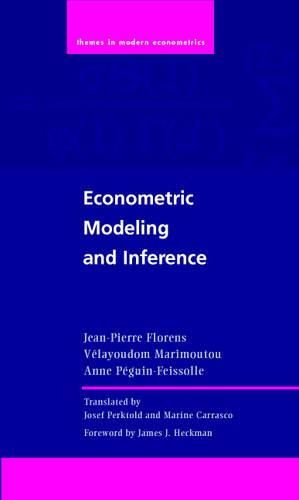Readings Newsletter
Become a Readings Member to make your shopping experience even easier.
Sign in or sign up for free!
You’re not far away from qualifying for FREE standard shipping within Australia
You’ve qualified for FREE standard shipping within Australia
The cart is loading…






Presents the main statistical tools of econometrics, focusing specifically on modern econometric methodology. The authors unify the approach by using a small number of estimation techniques, mainly generalized method of moments (GMM) estimation and kernel smoothing. The choice of GMM is explained by its relevance in structural econometrics and its preeminent position in econometrics overall. Split into four parts, Part I explains general methods. Part II studies statistical models that are best suited for microeconomic data. Part III deals with dynamic models that are designed for macroeconomic and financial applications. In Part IV the authors synthesize a set of problems that are specific to statistical methods in structural econometrics, namely identification and over-identification, simultaneity, and unobservability. Many theoretical examples illustrate the discussion and can be treated as application exercises. Nobel Laureate James A. Heckman offers a foreword to the work.
$9.00 standard shipping within Australia
FREE standard shipping within Australia for orders over $100.00
Express & International shipping calculated at checkout
Presents the main statistical tools of econometrics, focusing specifically on modern econometric methodology. The authors unify the approach by using a small number of estimation techniques, mainly generalized method of moments (GMM) estimation and kernel smoothing. The choice of GMM is explained by its relevance in structural econometrics and its preeminent position in econometrics overall. Split into four parts, Part I explains general methods. Part II studies statistical models that are best suited for microeconomic data. Part III deals with dynamic models that are designed for macroeconomic and financial applications. In Part IV the authors synthesize a set of problems that are specific to statistical methods in structural econometrics, namely identification and over-identification, simultaneity, and unobservability. Many theoretical examples illustrate the discussion and can be treated as application exercises. Nobel Laureate James A. Heckman offers a foreword to the work.